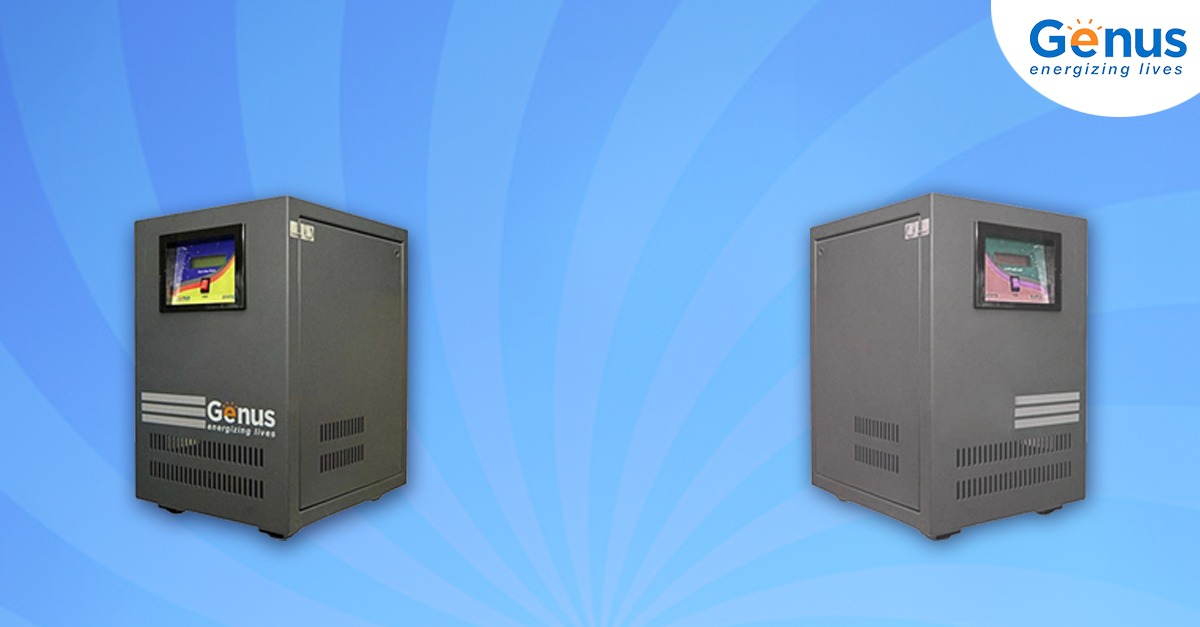
When it comes to choosing the right type of inverter for your home, it is easy to get confused between a pure sine wave inverter and a modified sine wave inverter. Now, as you already know, an inverter is a vital part of the power backup system and can make your life easy in case of outages. But you still need to do a modified sine vs pure sine wave inverter comparison, so that you can make the right choice and get your money’s worth. Read on to get started.
What is a Pure Sine Wave Inverter?
In a sine wave, the voltage rises from zero smoothly until it reaches a peak, and then gradually lowers and changes polarity instantaneously once it reaches zero again. The output voltage in a pure sine wave inverter comes in the form of sine waves.
This smooth output makes pure sine wave inverters suitable for household devices like TVs, fridges, microwaves, washing machine, and more. The power it produces, matches or sometimes exceeds the power supplied to your home, ensuring the safety of devices.
Pure sine wave inverters are essential for audio/video equipment and satellite systems as they work on sine wave output. Other appliances like microwave ovens, motors, and washing machines work on full output only when a pure sine wave is applied making this type of inverter an important choice.
What is a Modified Sine Wave Inverter?
While a pure sine wave inverter produces smooth outputs, a modified sine wave inverter creates a square pattern wave with a stair-step form. The polarity switches from positive to negative abruptly and can affect the sensitive equipment in your home. These inverters also cause a hum in the devices that are connected to them.
Also Read: Why is a Sine Wave Inverter a Better Choice than Square Wave?
While appliances like electronic timers, digital clocks, bread makers, refrigerator motors, fans, and fluorescent lights don’t work properly or don’t work at all on modified sine wave inverters, most commonly used equipment don’t experience any noticeable difference in operation. This is why modified sine wave inverters are cheap and the most common inverter sold by retailers.
Pure Sine vs Modified Sine Wave Inverter – Comparisons
Device Usage
Due to the choppy output voltage, modified sine wave inverters can’t be used for devices with sensitive electronics. It is thus not suited for some appliances like microwaves, compressors, motors, and even some fluorescent lights.
Also Read: This is why a Genus Sine Wave Inverter is perfect for your home
Pure sine wave inverters, on the other hand, match the actual sine wave very closely. This uniformity makes it perfect to be used as a home inverter. It should especially be considered over modified wave for operating medical devices and equipment.
Cost
Pure sine wave inverters produce a better output voltage form but cost more upfront. This is because they use more components to smooth out the voltage and achieve higher efficiency. A typical pure sine wave inverter has a starting price of INR 5000.
Also Read: 7 Reasons To Choose a Pure Sine Wave Inverter
Modified sine wave inverters are easier to manufacture, use fewer components, and are hence cheaper than pure sine wave inverters. Its price starts from INR 4500.
Efficiency
Modified sine waves reverse polarity abruptly and produce smaller waves of power. If used for appliances with motors, the efficiency will decrease further, and it will use more power. The inverter will run hotter and won’t run for that long.
Takeaway
So, there you have it. A concise pure sine vs modified sine wave inverter comparison. If the cost that you need to bear upfront is not an issue, it is recommended you buy the best sine wave inverter that you can find in the market. They are more efficient, provide a smoother output for your appliances, and ensure their safety in the long run.
